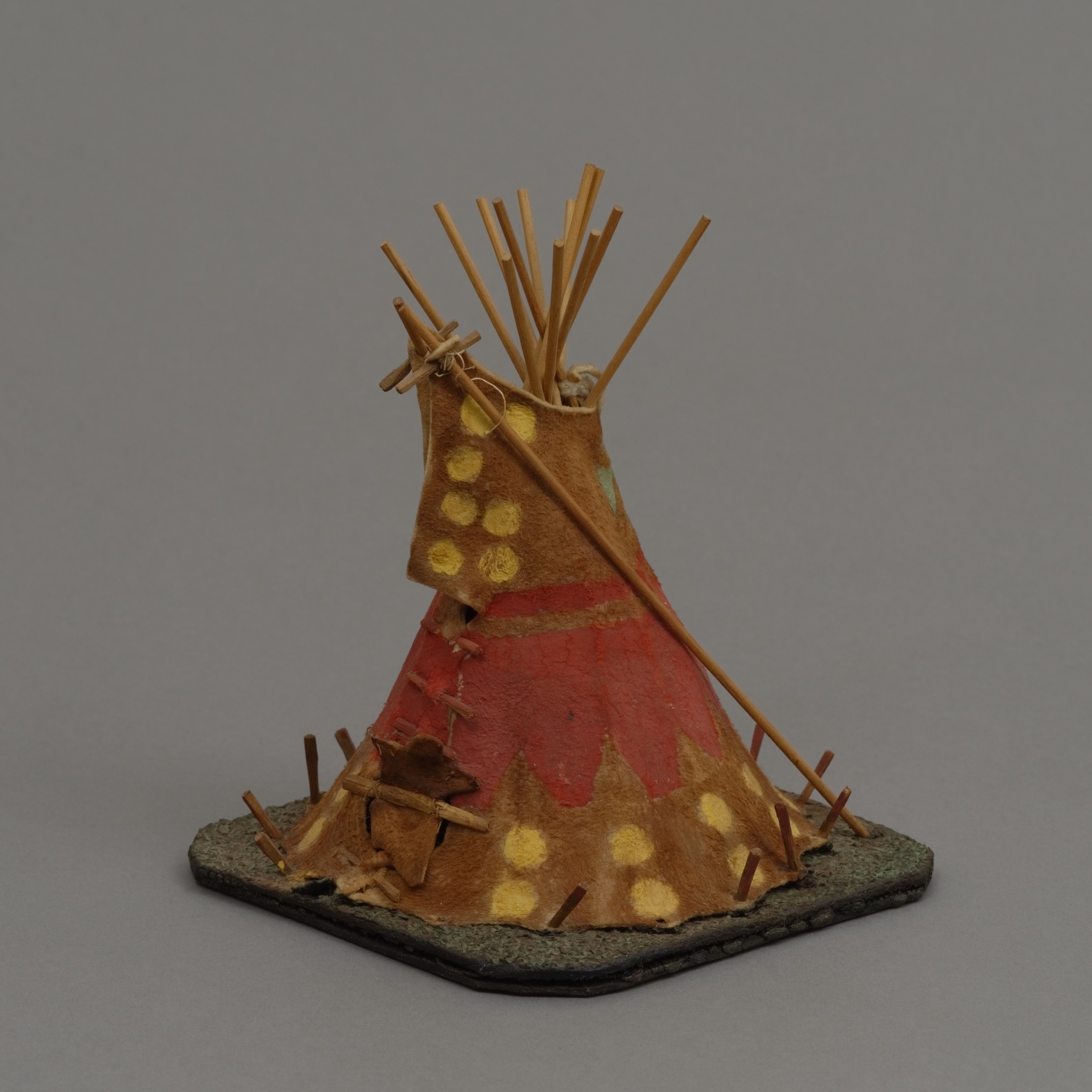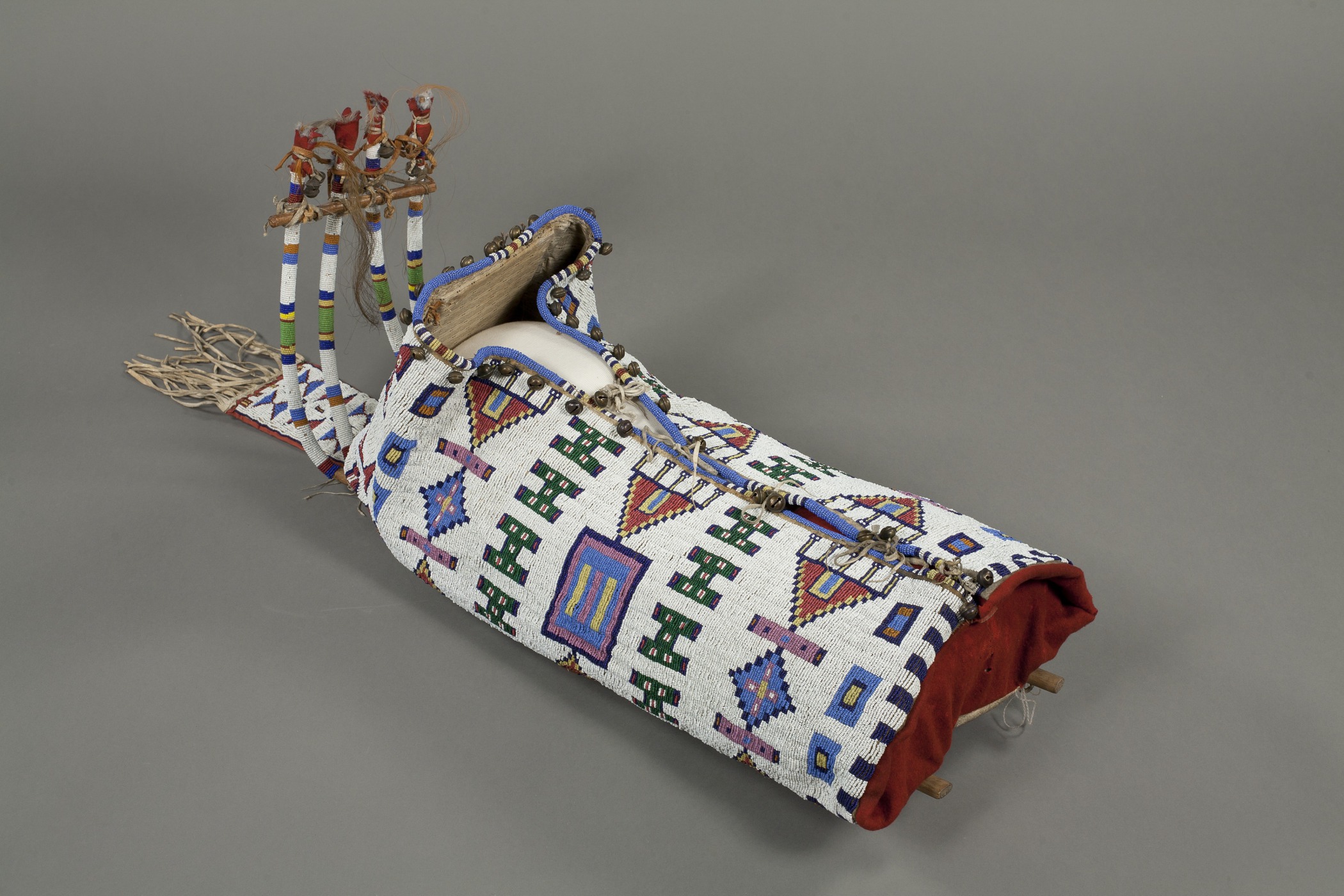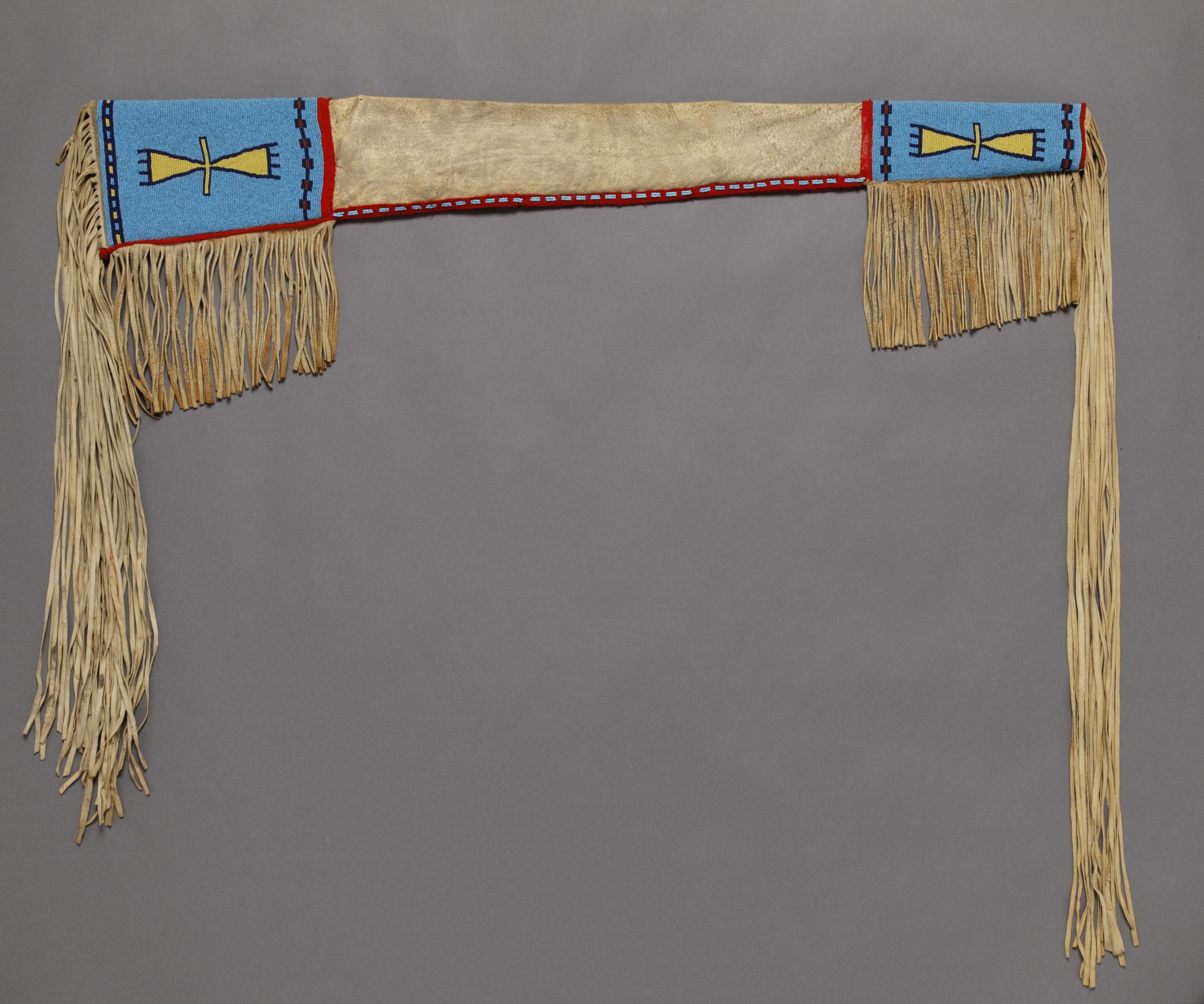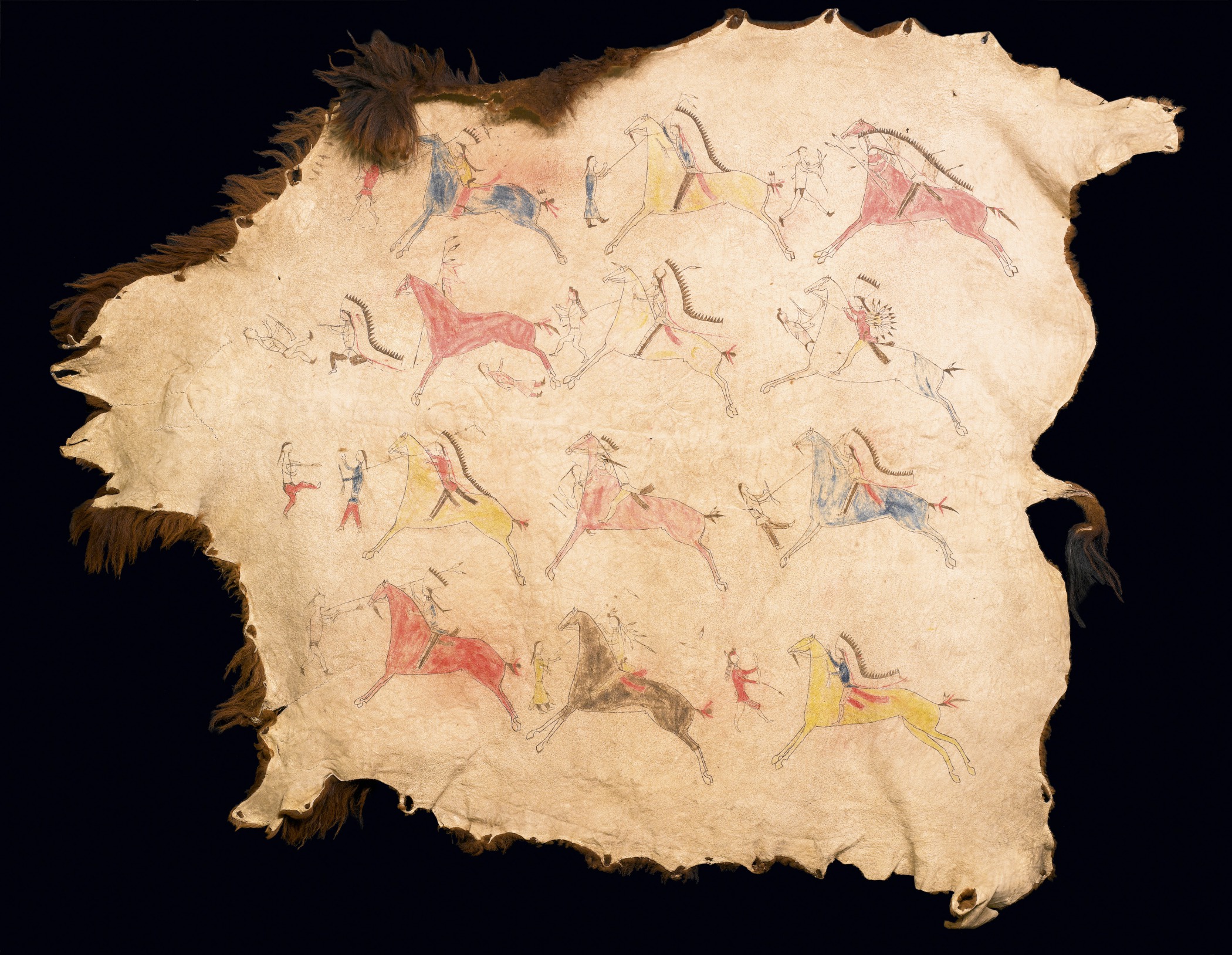The Plains encompass a vast geographic area that stretches from the Mississippi River in the east to the Rocky Mountains in the west. Covering about a quarter of the continent of North America, the Plains extend from the Arctic tundra in the north to the south Texas desert.
Explore Plains Themes
About this Region
Geography and Topography
Before the arrival of Europeans, the Plains were a seemingly limitless grassland with rivers running through it. The grasses could be taller than a man and waved in the breeze like waves on the ocean. The miles and miles of prairie teemed with wildlife. In addition to grasshoppers, locusts, and beetles, there were deer, pronghorn, prairie dogs, jackrabbits, rattlesnakes, wolves, and coyotes. The Plains were also home to great herds of buffalo (or American bison). It is thought that as many as 40 million buffalo once grazed upon these grasses.
When white settlers arrived, they plowed up the land and planted crops. They hunted the buffalo to extinction to make way for cattle grazing, the railroad, and to weaken the Plains cultures that resisted European and American encroachment and depended upon the buffalo for food.
The original ecosystem of the Plains no longer exists, except in small preserves in Kansas and Nebraska. Today, several tribes across the Plains maintain buffalo herds.
Plains Cultures
The Hood Museum of Art’s collection includes nearly 1,000 objects made by a great diversity of cultures from this region. This resource highlights objects made by nomadic hunter/gatherer groups like the Niitsitapii (Blackfoot), Inunaina (Arapaho), Assiniboine Nakota, Tsistsistas (Cheyenne), Niuam (Comanche), Cree, Apsáalooke (Crow), A’aninin (Gros Ventre), Ka’igwu (Kiowa), Lakota, and Nimi’puu (Nez Perce). It also includes works by semi-sedentary, agricultural groups like the Nakota, Osage, Ponca, and Dakota.








